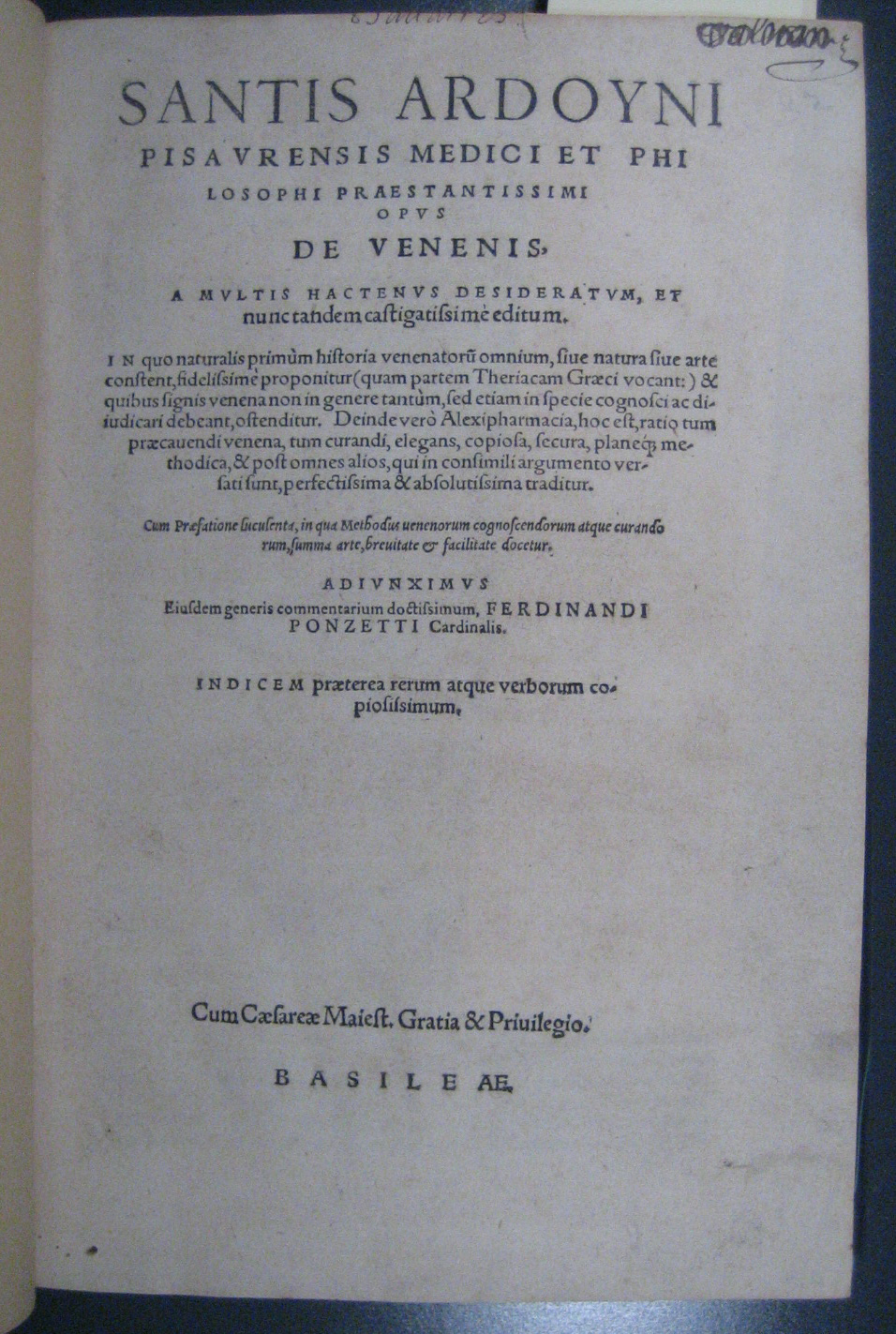



After it was liberated from the classical Greek model, knowledge of venoms and poisons was renewed. Physicians reported case studies from their practice rather than compiling, translating or paraphrasing ancient texts, particularly Greek. Paradoxically enough, however, in so doing they returned to a classical model in a new reversal in the relationship between ancient and Renaissance toxicology. Nevertheless, there was a substantial change. In previous Renaissance toxicological works, ancient literature was a source for factual information which did not necessarily correspond to actual facts. Here, instead, it provided analytical methods which were not always explicitly stated, but needed to be inferred from a close scrutiny of classical treatises. This is how rabies, which was present in the ancient toxicological corpus but was frequently omitted in subsequent literature, reappeared in the Renaissance toxicological works, since it was considered an envenomation caused by the bite of a rabid dog. In addition, contemporary epidemics such as plague were explained as intoxication processes resulting from contact with poisonous substances according to an analytical model sometimes present in ancient literature.



II+92+IV ff., 245 x 175 mm, *-*4, A-I4, K-K6. Venice: Apud Iuntas, 1601
Latin. Full-page layout. Body of text is roman with ornamental initials. Italic for the preface, index and headings.
In UCLA copy, recycled paper is used in the binding, and a large rotunda typeface is visible.
WZ 250 M539dp 1601
[CP]



I+104+II ff., 240 x 175 mm, A-L4, +-+4, ++-++2. Venice: Paulua meietus Bibliopola patauinus, 1588.
Latin. Full-page layout. Body of text is roman with ornamental initials. Italic for the preface, index and headings.
WZ 240 M539dv
Girolamo Mercuriale, (1530-1606)
[CP]



III + 264 + VI ff., 290 x 220 mm, ʇ4, a3-z3, A3-T3, V2 (folio S4 [= p. 487] is incorrectly signed R4). Basel, Henricus Petrus, 1562.
Latin. Full-page text, roman, ornamental initials.
UCLA copy is bound with Ferdinandi Ponzetti …, de Venenis lib. Tres.
UCLA Louise M. Darling Bio-medical Library, Special Collections, Vault SCB 152864 ALD.
Arduino Sante. (b. ca. 1390s), studied medicine and philosophy in Venice and is best known for his treatise on venoms and poisons, in which he explores both antidotes for venoms as well as rabies and the treatment of rabid dog bites. He relies mainly on ancient Greek and Arabic sources along with his own experimentation and knowledge in physiology.
V. De Donato, “Ardoini (Arduino, Arduini), Sante,” Dizionario Biografico degli Italiani. Rome: Instituto Della Enciclopedia Italiana Fondata, 1962, vol. 4, p. 45.
[GFC]
Contribution date: February 2016